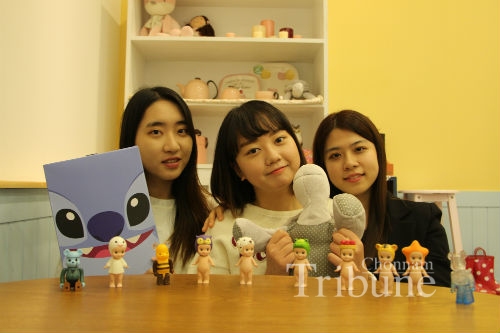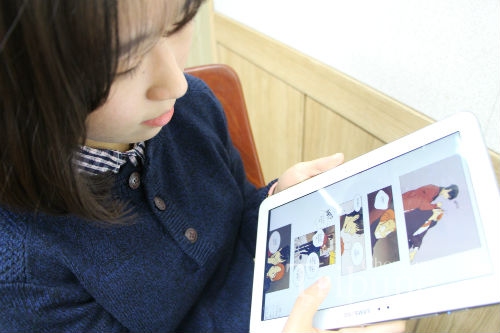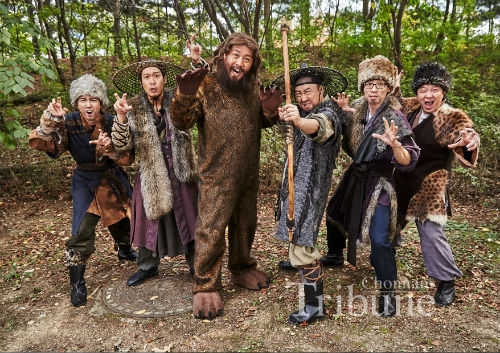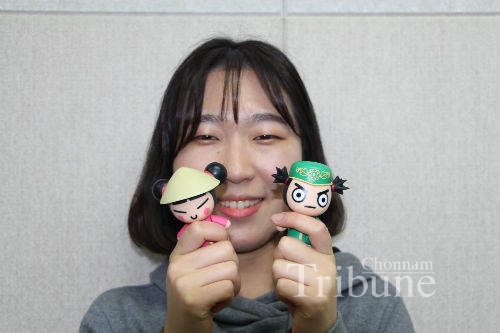20대의 문화

We are in the middle of the rise of different but similar cultures enjoyed by young generations. These kinds of cultures were considered as unpopular or even subcultures in the past, but recently they have been mainstreamed among the 2030 generations. These cultures are named Snack Culture, B Culture and Kidult Culture. Especially twenties share their thoughts or emotions in their daily lives by enjoying them. The Chonnam Tribune looked deeper into the cultural trends and explored the reasons why these kinds of cultures have been rising among young people.

Snack Culture through Mobile Devices
These days, college students have numerous things to do so they lack leisure time and seek more convenient and time-saving entertainments. Lee Ji-yeon (Freshman, Dept of Sociology) said, “I’m having a busy college life by doing some club activities and extracurricular activities. I like to read card news or webtoons during the short break to refresh myself and get some information.” Like this, ‘snack culture’, which is a type of new culture of enjoying web contents in 10-15 minutes like eating a snack during a short break by using mobile devices, became a new trend among young people in Korea.
All of smartphone contents can be enjoyed as snack culture. Webtoons are the most well-known contents, and nowadays other similar types of short online contents such as web dramas and web novels have become popular. Card news which is composed of images and short sentences gives brief information and all of smart phone games can be called Snack Culture too. Being posted online gives more accessibility and is time saving for people. Thanks to such characteristics, snack culture became one part of our daily life. Choi Ha-kyeong (Sophomore, Dept of English education) said, “I spend most of my break time watching smart phone contents. I feel a bond of sympathy with people who subscribe to the same contents as me and it takes a role as a nice icebreaker when I meet new people.”
These kinds of contents make producers and consumers communicate with each other. For example, authors of webtoons and web novels communicate with their readers by posting comments. Some authors like to express their personal intimacy to their readers through comments and like to exchange their thoughts about their work. Moreover, sometimes readers put pressure on authors to change their storyline and it works out. This interaction distinguishes the Snack Culture from other traditional cultures and makes it more attractive. There are even some newly-coined words like ‘umchina’ and ’chadonam’ that have originated from the contents. This trend will grow larger in the future. The report titled "Trends in Culture and Art for 2014" released by the Ministry of Culture, Sports and Tourism insists that Snack Culture will be one of the core trends to grow rapidly.


B Culture with Freshness and Sympathy
Some young people want new types of cultural contents than existing ones. B grade culture captures such needs of the public. “Nowadays, many people do not want to see stereotypes in media contents because they are tedious. As a result, instead of existing entertainments including TV shows and movies, they have a tendency to find new and creative contents,” Kim Myung-eun (Sophomore, Faculty of Business Administration) said. The freshness of B class culture comes from distinctive features which are different to the perspective of the majority in a society. Its main characters and themes are ordinary and even foolish. In the case of media contents, so called byeongmat, tastes of idiocy, main characters’ have ridiculous behaviors and the absurd stories make people laugh.
Since many people are not satisfied with current society, they want political and social satires on society and government. They tend to sympathize with people in trouble at the same time. Through self-deprecation and ironic situations, B Culture comforts its audience. Particularly, it focuses on showing real irrationalities that everyone feels in everyday life and it shares the emotions of ordinary or unsuccessful people. “We feel intimacy with the contents of B Culture and it makes us sympathize with the satires,” Choi Si-yeon (Junior, Dept. of Chinese Language and Literature) said. Moreover, feeling sympathy makes people lay down their burden even if it is for a very short time. “Satirizing the reality with a laugh is one of the characteristics of B Culture. Thus, people feel more comfortable with it and can stay relaxed even in negative circumstances,” Jang So-mi (Sophomore, Faculty of Business Administration) added.
B Culture is originated from B movies produced with a lower budget, nameless actors and deficient technologies in Hollywood. As time flies, however, it is becoming the term for all types of non-mainstream culture. Unlike a class culture that focused on elite people and noble, complicated subjects, B Culture covers minor things like sex and pleasure. In fact, the culture was underestimated because of such characteristics, but now it influences our culture and society at large. Its impact has expanded more and more. Moreover, thanks to advanced media technologies, ordinary people who consume media can produce media contents such as parodies of existing cultural products. With the advent of prosumers, the diversity of B Culture has increased and young people are satisfied with it.

Kidult Culture for Joyful and Stress-free Life
Kidult is a combination of the words ‘kid’ and ‘adult’, referring to adults who have hobbies suitable for children. Kidults are interested in toys, comic books, costumes, and snacks that they used to enjoy in their childhood. In the past, Kidult Culture was regarded as an unusual and abnormal hobby of the minority. However, as the number of people who enjoy Kidult Culture increased, it became one of taste cultures like a subculture in our society.
The café ”Cheongchun Dabang” is one of the most loved cafés among CNU students due to its unique atmosphere. What makes this café special is its toy figures and character items decorating the whole place. The owner of the café who collected and displayed all these items for herself said, “In my childhood, character items were so expensive that I could not afford to buy them. Finally when I had the financial capacity to buy them, I decided to enjoy them.” She added, “I feel satisfaction with the items that remind me of beautiful memories of childhood. Also, I want to share this emotion with CNU students.”
The popularity of the Kidult Culture can be explained sociologically. Young people who are tired of daily life want to turn back to their childhood when they were happy in a carefree life. They try to heal their mind with joyful memories and imaginations that Kidult items bring to them. The increased purchasing power of the Kidult customers plays an important role in forming the enormous Kidult Culture. Furthermore, it is becoming an influential and powerful trend in our society. Many companies are setting marketing strategies toward Kidult consumers by making their products in collaboration with famous character companies or presenting particular character items such as free gifts. For example, Macdonald’s often have an event which gives customers toy figures, and each time the event is held, people are flocking to the shops. Also, many cosmetic companies are releasing new products of collaboration with character companies. Lee Hyeon-jeong (Junior, Dept. of English Language and Literature) said, “I prefer cosmetic products with animation or game characters to the original one because it is more unique and cute. In my opinion, all women in their 20s are ‘Kidults’ in this respect.” It shows that the number of Kidults is very large, and nowadays they can reveal their hobby and taste. Kidult Culture and its market are expected to grow rapidly.
Cultures as Comforting and Heartening Youth
The aforementioned three cultural phenomena represent the tired life and emotions of youth especially in their twenties. These cultural contents give them a break to rest during very short times. Professor Park Hae-Gwang (Dept. of Sociology) said, “Twenties encounter many competitions and hardships in their road. Therefore, they find these types of cultures steadily in order to have a rest break and stay free from daily stress. I hope the cultures develop and show the diversity of culture in our society. If these cultures embrace characteristics of other kinds of cultural contents, it would be more meaningful and worthwhile.”
We can face a lot of news saying that “these days, many young people pursue a stable job not what they really want, because of the problems of financial viability and employment. However, it is also difficult to get a job.” College students are trying to obtain high credits, English proficiency scores and internship experience. Most of twenties have a hard time preparing for their future. In this situation, they want to stay joyful and stress free in their daily lives. Thanks to them, young people can de-stress, relax, and share their emotions with each other. The popularity of these cultures is expected to go on in the future.
By Park Su-kyeang, Student Editor
Na Min-a, Student Editor
Kim So-hee, Tribune Reporter

